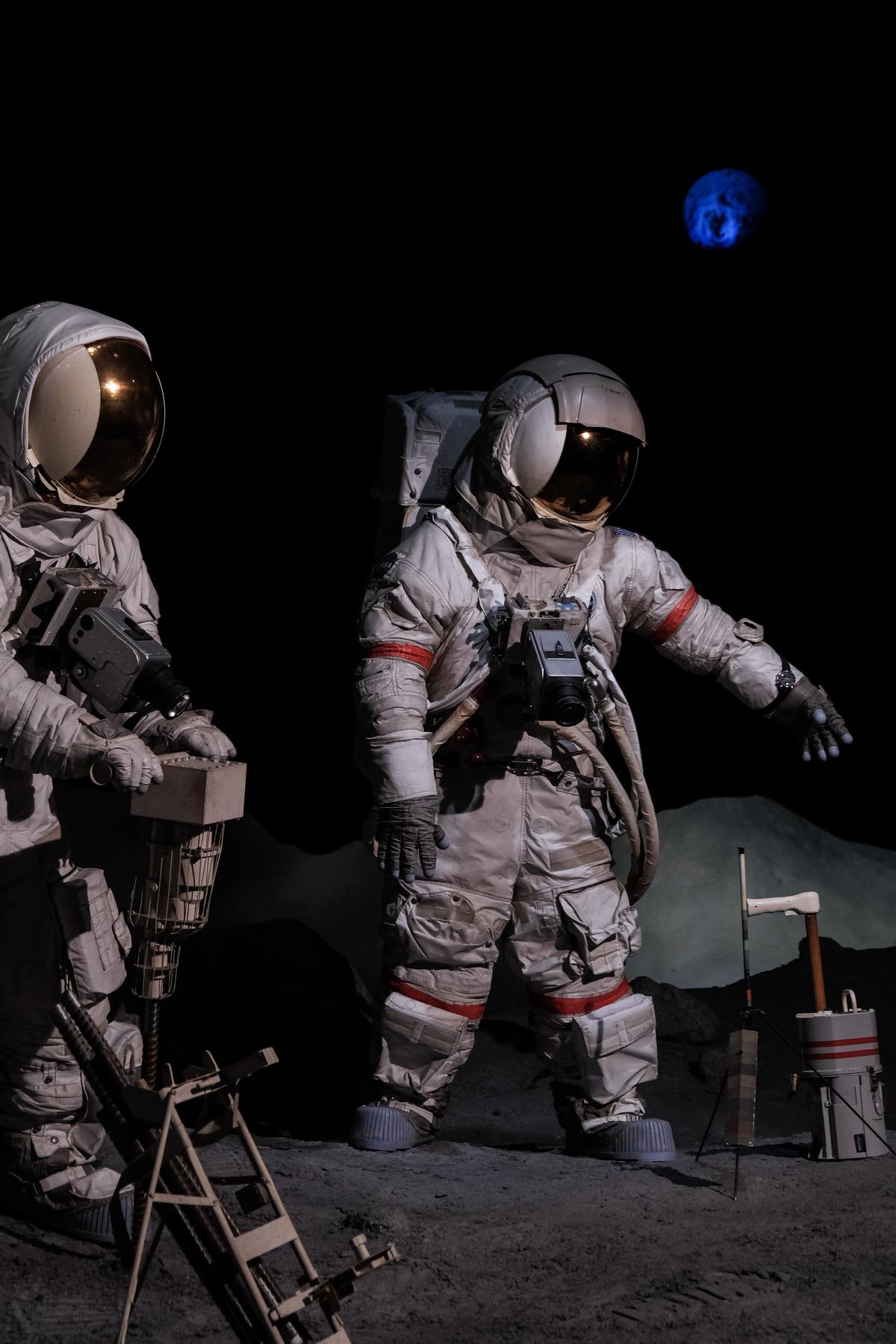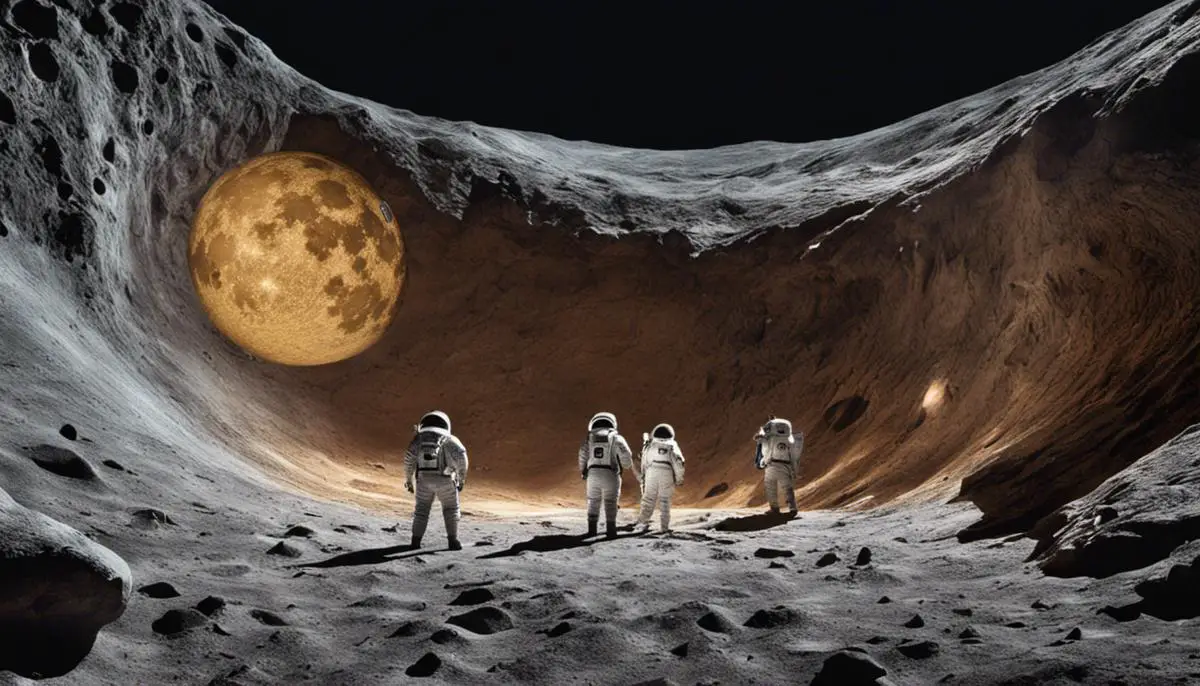When considering the immense contributions to the field of astrobiology, the profound imprint of NASA’s Apollo missions is impossible to overlook. As the first expeditionary missions to another celestial body, the Apollo missions paved the way for astrobiology, serving as a catalyst for scientific discovery and advancements in our understanding of life beyond Earth. They helped sear the discipline of astrobiology into the scientific firmament, and their influence reverberates through the field even today, over five decades after astronauts first imprinted their boot marks in the lunar dust. This article delves into the roots of astrobiology—the theories, discoveries, and technological marvels that laid down its foundations and the influential role Apollo missions played in building upon these foundations.
Contents
Origins of Astrobiology and the role of Apollo missions
Origins of Astrobiology
Astrobiology as a discipline emerged prior to the inception of the Apollo missions, born out of mankind’s curiosity about the existence of extraterrestrial life. This scientific domain initially centered around theories and conjectures about the possibility and nature of life beyond our planet. While these early works were often based on educated speculation, they laid a foundation for the systematic study of astrobiology.
Catalyst: The Apollo Missions
The Apollo program, launched by NASA in the 1960s, was primarily designed to land humans on the moon and safely return them to earth. While these missions were not explicitly astrobiological in nature, their findings proved invaluable to the field. The Apollo missions inadvertently set the stage for astrobiology by providing physical evidence and unprecedented information about space, thus grounding the speculations and theories that characterized the early days of astrobiology.
Findings and Contributions
The Apollo missions brought back 382 kilograms of lunar rock and soil, triggering a flurry of laboratory analyses. These studies revealed that the moon was void of life and seemingly inhospitable for future life, countering prior theories about the potential existence of lunar life. In addition, the lunar samples indicated a shared history between the moon and earth, shedding light on planetary formation and evolution – critical aspects of astrobiology. The lunar landings also highlighted the extreme conditions of space, fueling discussions about life’s tenacity and adaptability.
Implication for Astrobiology
The absence of life on the moon bolstered the hypothesis that life, as we know it, requires very specific conditions. This concept, known as the ‘Rare Earth’ hypothesis, grew into a cornerstone of astrobiology. Furthermore, the Apollo missions served to demystify space, effectively transforming it from an abstract concept into a physical reality, accessible to human exploration and scientific inquiry. This allowed astrobiology to venture into new territories, exploring questions about life’s cosmic ubiquity or singularity.
Acceleration of Astrobiology
Thereafter, astrobiology experienced significant acceleration. Post-Apollo, scientists turned to other astronomical bodies, such as Mars and the icy moons of Jupiter and Saturn, in the search for extraterrestrial life. Technology developed for the Apollo missions catalyzed the creation of probes and rovers, essential tools for astrobiology whose role remains central today. In using these tools, researchers identified water on Mars and organic molecules on Enceladus, Saturn’s moon, providing tantalizing hints of conditions conducive to life beyond Earth.
The Apollo Missions: An Astrobiological Milestone
Internationally celebrated for lunar exploration, the transformative input of the Apollo missions to astrobiology is nothing short of colossal and unanticipated. These missions clarified misconceptions, substantiated theories, and equipped astrobiology with tangible facts, igniting a paradigm shift in the investigation of life beyond our planet. Today, the wealth of knowledge, professional expertise, and technological innovation resulting from the Apollo program continue to inform contemporary astrobiology, deepening our grasp of life’s potential throughout the cosmos. Although the Apollo missions could not conclusively confirm the existence of extraterrestrial life, their enduring influence on astrobiology remains substantial, steering our relentless pursuit of comprehension and exploration within the limitless realm of the universe.

Key Findings from the Apollo Missions
Unearthing the Moon’s Geological Composition and History
Prior to the Apollo missions, our understanding of the moon was far from sophisticated, greatly reliant on terrestrial observations. However, as the Apollo program zealously pursued manned spaceflight, NASA ingeniously wove science objectives into each mission with a view to maximizing the accrued scientific knowledge. These objectives encompassed lunar sample collection, photographic documentation of the lunar surface, and the deployment of various experiments to study the properties and behavior of space.
Undoubtedly, Apollo 11 imprinted an indelible mark in astrobiology by delivering the first lunar samples back to Earth. The collection of over 22 kilograms of lunar rock and soil provided unparalleled insight into the moon’s genetic makeup. Advanced analytical techniques like mass spectrometry and neutron activation were employed to study these samples, revealing an unexpected similarity to Earth’s basaltic rocks. This implicit evidence of shared origin birthed a revolution in our perception of planetary genesis.
Implication for Extraterrestrial Life
Astrobiology seeks to investigate the possibility of life in other planets. The Apollo missions’ contribution to this field, albeit indirect, involves the discoveries that have provided insights into how life might have originated and flourished in environments beyond Earth. The lack of organic matter in lunar samples has shown the inherent unfriendliness of the moon to life as we know it. Yet, this has also given astrobiologists a baseline against which to compare environments of other celestial bodies.
Lunar Water and Volatile Compounds
Apollo missions have also presented insights into the existence of lunar water and other volatile compounds, a development with profound implications for astrobiology. The discovery of trapped water within lunar rocks was a serendipitous find. The Apollo missions revealed that the moon was not bone-dry as initially believed. Water is a key ingredient for life as we know it, and its presence on the moon raises intriguing questions about the lunar and extraterrestrial potential for habitation.
Impact on Our Understanding of The Sun
Another significant contribution of the Apollo missions to astrobiology came through solar science. The Apollo Lunar Surface Experiments Package (ALSEP) conducted various experiments to measure solar wind, lunar seismic activity, lunar atmospheric composition, and more. The data from these experiments, coupled with surface sample analyses, offered insights into the sun’s activity levels and its influence on the lunar environment. Understanding the sun’s activity is crucial for astrobiology as it impacts the potential habitability of planets within our solar system.
Search for Extraterrestrial Intelligence
The Apollo missions have indirectly contributed to the search for extraterrestrial intelligence (SETI). The success of Apollo has fortified belief in exploring the vast universe, motivating further efforts in the search for potential extraterrestrial life forms. Additionally, the missions have provided valuable data for developing computer models and simulations of moon-like exoplanets, thereby aiding SETI endeavors in identifying potential signals from intelligent beings in the cosmos.
To conclude, the Apollo missions have made monumental contributions to the field of astrobiology. This ranges from gaining foundational knowledge about lunar geology, evaluating the possible existence of life, to gaining valuable insights about the sun. These missions have served to expand our comprehension of the cosmos and our position within it.

Impacts of Apollo findings on Astrobiology
Ground-breaking Influence of Apollo Missions on Astrobiology
The Apollo missions brought about a transformative change in astrobiology, sparking a profound alteration in our grasps of life’s feasibility beyond our planet. Before these missions, theories about extraterrestrial life hinged mostly upon abstractions and remote interpretations. However, with the advent of the Apollo program, scientific investigations went beyond mere conjecture by actively engaging in on-site lunar rock and dust collection and evaluation.
Moon Rocks and Their Astrobiological Significance
Perhaps one of the most significant ways Apollo missions contributed to astrobiology was in the collection of moon rocks. The samples were diverse, and included basaltic rocks, breccias, regoliths, and anorthosite, a rock thought to be characteristic of the moon’s primitive crust. The presence of these different types of rocks suggested a diversity of formation processes, and by extension, the potential for a broad range of possible planetary conditions across the universe.
Further analysis revealed traces of various lunar resources, such as helium-3 and water ice, which are critical for potential long-duration astronaut stays. The discovery of water ice especially confronted astrobiology’s formerly Earth-centric perspective concerning life’s reliance on liquid water.
The Evolution of Astrobiological Hypotheses
Aside from gaining crucial knowledge useful in future explorations, the Apollo missions stimulated the evolution of astrobiological hypotheses. For instance, there were heated debates concerning the origin of lunar transient phenomena (kind of lunar ‘weather’) which sparked interest in other aspect of astrobiology, such as planetary geology and atmosphere’s influence on life establishment.
The discovery of lunar water ice challenged the pre-Apollo belief that lunar environments were completely dry, and added a layer of complexity to our understanding of lunar geology. It forced scientists to reconsider the moon and other celestial bodies’ ability to bear life, or at least, to serve as waystations for life’s interplanetory transfer.
This set the stage for the ‘panspermia’ hypothesis, suggesting that life, or its building blocks, could potentially travel between planets enclosed in meteorites. The moon’s impact craters, which are a testament to the frequent meteorite collisions, added credibility to this idea, as it’s plausible that the moon, and quite possibly, other celestial bodies, could have been seeds of life transported across space.
New Research Directions in Astrobiology
The Apollo missions also resulted in new research directions in astrobiology. The newfound understanding of space radiation and its potential impact on life forms paved the way for advanced astrobiological research in understanding the survival capacity of life in extreme conditions. The interest in extreme life forms, known as extremophiles, was intensified due to Apollo’s revelations. These organisms hold the keys to understanding how life could potentially adapt and thrive in alien planets.
Moreover, the analytical techniques developed for lunar sample analysis, like electron microprobe, atomic absorption spectroscopy, and more, have been universally adopted in astrobiological research throughout the decades.
The Apollo Missions: Pioneering Astrobiology Research
Undeniably, the Apollo missions served as a pivotal foundation for advanced research in astrobiology. By providing invaluable data and samples from an extraterrestrial body, they transformed astrobiology from a field rife with theoretical speculations to a discipline with evidence-backed theories on life beyond our planet. The impact of these missions has been far-reaching, triggering a wider search for alien life forms, a reassessment of the conditions essential for life support and introducing modern research techniques that persistently develop the field of astrobiology.

Photo by joehan330 on Unsplash
Modern Astrobiology and the influences of Apollo Missions
Unfolding Mysteries of the Universe: Apollo Missions and Astrobiology
Between 1961 and 1972, NASA kick-started the Apollo missions with the primary objective of landing humans on the moon. A significant focus of these missions was to gather samples from the lunar surface and transport them back to Earth safely. These specimens, rich in revealing the moon’s geologic history, dramatically redirected the course of astrobiological research.Scientific Impact
The lunar samples retrieved during the missions contained diverse types of rocks and soil, providing an unmatched resource for understanding the processes that have shaped the moon over billions of years. For astrobiologists, these samples opened up new avenues of exploration. The information gleaned from studying these samples unveiled essential clues about planetary formation and the evolution of our own as well as other planets, thus shaping the course of astrobiology.Technological Advancement
The Apollo missions not only contributed in terms of scientific knowledge, but they also significantly impacted the development of new tools, techniques, and methodologies used in modern astrobiology. The need to extract and transport samples from the harsh lunar surface triggered advancements in instrumentation and tackling material under extreme conditions. Robotic arms, custom collection devices, and sample storage units were innovations produced out of necessity for these missions. In present-day astrobiology, these technologies have seen widespread use in retrieving and analyzing samples from extreme environments on Earth and beyond.Extraterrestrial Life and Apollo Missions
One of the core pursuits of astrobiology is the search for life in the cosmos. The Apollo missions, while not directly focused on this prospect, nevertheless helped shape this aspect of astrobiology. Information gathered about the moon’s environment – its desolate surface and extreme conditions, lack of water and atmosphere – confirmed that it’s unlikely to host life as we know it. However, understanding these conditions is essential in narrowing down the possibilities and honing our search strategies for extraterrestrial life.Nested Impacts
The Contributions of the Apollo missions to astrobiology extend beyond direct scientific and technological advancements. The missions marked a critical leap in our understanding of the universe and our place in it. This monumental victory for mankind augmented public interest in space exploration and created an impetus for ongoing investigation and discovery, invigorating the field of astrobiology like never before.The Apollo missions brought about a wave, seen through a series of NASA explorations that continue till date, with Mars missions and the search for exoplanets. The legacy of Apollo lives on in each of these endeavors, underscoring the significant contribution of Apollo missions to modern astrobiology.
Implications for Future Missions
The Apollo missions set the precedent for future space missions, including those planned for astrobiology. The comprehensive preparation, meticulous execution, and rigorous post-mission analysis associated with the Apollo missions provided invaluable lessons that have been and continue to be used to design and conduct subsequent space explorations more effectively. The legacy of the Apollo missions is continually leveraged, guiding new generations of researchers in their pursuit of unraveling the mysteries of the cosmos.
Photo by joehan330 on Unsplash
Undoubtedly, the Apollo missions facilitated a transformative shift in astrobiology, instigating a seismic ripple that would go on to shape modern-day practices in the field. The groundwork laid by the Apollo missions continues to steer the direction of astrobiological research, providing insights into the potential for extraterrestrial life throughout the cosmos. The missions not only altered our understanding of our neighboring celestial bodies but also fostered crucial advancements in the tools, techniques, and methodologies employed in astrobiology today. As we stand on the cusp of a new era in space exploration, it is vital to recognize and appreciate the legacy of the Apollo missions and their enduring impact on our quest to unravel the mysteries of life beyond Earth.

With a passion for unraveling the mysteries of the moon, Dr. Luna Sterling is a highly-respected astrophysicist, a dedicated lunar enthusiast, and a captivating blogger. After earning her Ph.D. in Astrophysics from the Massachusetts Institute of Technology (MIT), she served as a lead scientist and mission planner for NASA, contributing significantly to various lunar missions.
For over two decades, Luna has been at the forefront of lunar science, pushing boundaries and pioneering discoveries that have enriched our understanding of the moon’s geological history. However, it’s her infectious enthusiasm for all things lunar that truly sets her apart.
In an endeavor to bring the moon closer to everyone, Luna started her blog, “Luna’s Lens: A Closer Look at the Moon.” With this platform, she offers a unique blend of intriguing moon facts, updates on lunar missions, and personal anecdotes from her experiences in the field, all told in an engaging and accessible manner.
Luna’s unique blend of scientific expertise and warm, humorous writing style has transformed complex astrophysics into compelling narratives that captivate her audience. As a gifted communicator, she leverages her knowledge and experience to relate scientific facts to everyday life, thus making her blog a must-read for both seasoned space enthusiasts and curious newcomers.
Interactive and inviting, Luna frequently encourages reader engagement through thought-provoking discussions and a monthly ‘Ask Dr. Luna’ feature, where she personally answers questions about the moon and space exploration. A celestial storyteller at heart, Dr. Luna Sterling’s passion for the moon is as vast as the cosmos she explores, making her an invaluable beacon in the world of lunar science.
